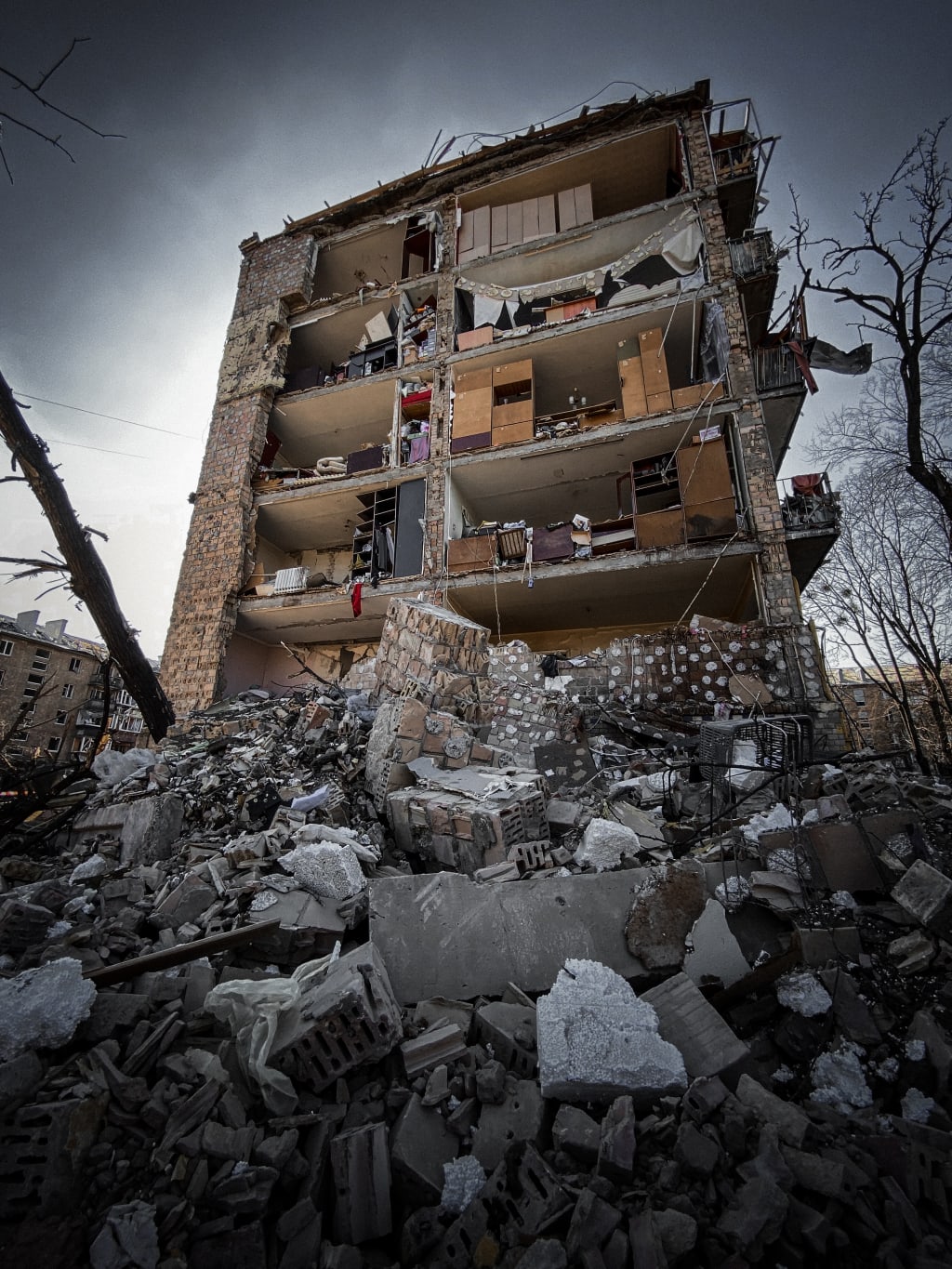HOW TO SAVE IN EARTGQUAKE
PROTECT YOUR SELF IN EARTHQUAKE

1. Understanding Earthquakes: Causes and Risks
1.1 The Science behind Earthquakes
Earthquakes, the earth's version of a temper tantrum, are caused by the sudden release of energy in the Earth's crust. This release can occur due to tectonic plate movements, volcanic activity, or even human-induced causes like mining or drilling. When these forces clash and rub against each other, they create seismic waves that result in the ground shaking as if it's doing the cha-cha.
1.2 Identifying High-Risk Areas
Some places are as shaky as a caffeine addict's hands, and it's important to identify them to be better prepared. Fault lines, regions near active volcanoes, and areas with a history of frequent earthquakes are often classified as high-risk zones. So, if you're living in one of these hotspots, it's essential to have your earthquake survival plan ready and your running shoes by the door.
2. Preparing Your Home for an Earthquake
2.1 Conducting a Home Hazard Assessment
Let's face it, your home is filled with potential hazards waiting to topple over during an earthquake. Conducting a home hazard assessment involves identifying unsecured heavy furniture, fragile items on tall shelves, and flimsy fixtures that could turn into projectiles. No one wants to play dodgeball with their own belongings, so take the time to secure them properly.
2.2 Securing Heavy Furniture and Appliances
To avoid your furniture playing a game of musical chairs during an earthquake, use furniture straps, wall brackets, or non-slip pads to secure them in place. Your appliances can also be potential troublemakers, so make sure to fasten them properly and keep any breakable items far, far away from the edge of countertops.
2.3 Retrofitting Techniques for Older Homes
If your home is older than your favorite shirt (and that's saying something), it might need a little extra TLC to withstand the shaking. Retrofitting techniques, like adding anchor bolts or reinforcing the structure, can help strengthen your home's ability to withstand earthquakes. Think of it as giving your home a superhero suit, because safety always comes first!
3. Creating an Emergency Plan
3.1 Establishing Communication Protocols
When the ground starts moving like a dance floor in an earthquake, clear communication can save lives and prevent confusion. Establishing communication protocols with your family members, such as having a designated meeting point or using texting instead of calling, can help ensure everyone's safety during an earthquake. Plus, it saves you from playing that "Can you hear me now?" game.
3.2 Identifying Safe Meeting Points
When the ground beneath your feet is performing a salsa routine, it's essential to have a safe meeting point outside your home. This could be a neighbor's house, a local park, or even a convenient lamppost. Just make sure everyone in your household knows where to go to regroup and avoid feeling like a lost squirrel in the chaos.
3.3 Assigning Responsibilities within the Household
In the midst of an earthquake, assigning responsibilities to each family member can help maintain order and ensure everyone's safety. Someone can be in charge of grabbing the emergency kit, another can take care of the pets, and someone else can be responsible for keeping an eye on Grandma's favorite vase. Distributing tasks means everyone can play their part in surviving the earthquake and avoiding any post-earthquake blame games.
4. Assembling an Earthquake Survival Kit
4.1 Essential Items for the Survival Kit
When an earthquake strikes, you don't want to be caught empty-handed or relying solely on your impressive juggling skills. Assemble an earthquake survival kit that includes essentials like non-perishable food, a flashlight, a battery-powered radio, extra batteries, a first aid kit, and a cozy blanket. Remember, you're preparing for an earthquake, not a camping trip, so pack accordingly.
4.2 Stockpiling Emergency Food and Water
When the ground is shaking, and your stomach is growling, having a stockpile of emergency food and water can be a lifesaver. Keep a supply of canned goods, energy bars, and plenty of water that can last at least three days. That way, you'll be prepared to ride out the earthquake without resorting to desperate measures like eating the last stale bag of chips buried in the back of your pantry.
4.3 Including First Aid Supplies
Injuries can happen during an earthquake, whether it's a sprained ankle from dodging falling objects or a panicked paper cut from hastily digging into your emergency kit. Including first aid supplies like bandages, antiseptic wipes, and pain relievers can help patch up any minor wounds and provide some comfort in the midst of the earthquake aftermath. Remember, it's better to be safe and prepared than to rely on your questionable DIY medical skills.
Remember, earthquakes are unpredictable, just like the flavor of Mystery Airheads. So, make sure to educate yourself, prepare your home, create a plan, and pack that survival kit. With a little bit of preparation and a sprinkle of humor, you'll be ready to face the Earth's shaky tantrums head-on. Stay safe, my fellow earthquake survivors!
5. Ensuring Personal Safety during an Earthquake
5.1 Reacting Quickly and Calmly
When the ground starts shaking, it's important to stay calm and react quickly. Panic won't do you any good, so take deep breaths and remind yourself that you've got this. Find a safe spot away from windows, heavy furniture, and anything that could potentially fall on you.
5.2 Finding Safe Shelter
In the midst of an earthquake, finding shelter is crucial. Look for a sturdy piece of furniture like a table or desk that you can get under. If there's no furniture nearby, cover your head and neck with your arms and take cover against an interior wall. Stay away from doorways, as they can swing and cause injuries.
5.3 Protecting Yourself from Falling Objects
As things start shaking and objects go flying, it's essential to protect yourself from falling debris. If you're near a shelf or a cabinet, try to move away from it to avoid getting hit. If you can't move, use your body as a shield by covering your head and face. Remember, fashionable as it may be, a falling bookshelf is not a good look for anyone.
6. Responding to an Earthquake: Dos and Don'ts
6.1 Dos: Actions to Take during an Earthquake
Do stay indoors and take cover. Do drop, cover, and hold on. Do stay away from windows and exterior walls. Do stay calm and reassure others. Do be prepared for aftershocks.
6.2 Don'ts: Actions to Avoid during an Earthquake
Don't run outside during the shaking. Don't use elevators. Don't stand next to glass windows. Don't go back inside a building until it's deemed safe. And definitely don't forget to bring some snacks for the post-earthquake hunger.
7. Assessing and Minimizing Structural Damage
7.1 Inspecting Buildings for Damage
After the earth has calmed down, it's time to assess the damage. Look for cracks in walls, leaning structures, or any signs of instability. If you're not sure about the safety of a building, it's better to be safe than sorry and seek professional help.
7.2 Reinforcing Weak Structures
If you've identified weak spots in your home or workplace, it's time to reinforce them. This could include adding braces to walls or securing heavy furniture to prevent them from toppling over.
7.3 Consulting with Professionals for Structural Evaluation
When it comes to assessing the true condition of your building, it's best to consult with professionals. Structural engineers can evaluate the integrity of your property and provide recommendations for any necessary repairs or reinforcements. Don't worry, they won't judge you for having a few cracks in your walls.
8. Recovering and Rebuilding after an Earthquake
8.1 Dealing with Post-Earthquake Trauma
Experiencing an earthquake can be a traumatic event, and it's important to take care of yourself and others emotionally. Reach out to friends and family for support, and consider seeking professional help if needed. Remember, it's okay to feel shaken up.
8.2 Navigating Insurance Claims and Assistance Programs
If your property has suffered damage, it's time to navigate the world of insurance claims and assistance programs. Take the time to document the damage, gather necessary paperwork, and reach out to your insurance provider or local authorities for guidance and support. And don't be shy about asking for help – it's what they're there for.
8.3 Rebuilding Strategies for Resilient Communities
To bounce back stronger, communities affected by earthquakes can implement rebuilding strategies focused on resilience. This includes adopting building codes that prioritize earthquake-resistant construction, creating emergency preparedness plans, and fostering a sense of community support. Remember, it's not just about rebuilding buildings; it's about rebuilding lives and communities.
Closing Thoughts
Being well-prepared and informed about earthquake safety is essential for safeguarding yourself and your community. By implementing the measures outlined in this article, you can minimize the impact of earthquakes and increase your chances of a safe and efficient recovery. Remember, preparedness is key. Stay vigilant, maintain your emergency supplies, and regularly review your earthquake response plan to ensure its effectiveness. Together, we can build resilience and protect lives in the face of such natural disasters.
Frequently Asked Questions
1. How can I determine if my area is at high risk for earthquakes?
Understanding the seismic activity in your area is crucial for assessing the risk of earthquakes. You can consult local geological surveys, seismic hazard maps, or contact your regional earthquake monitoring agency for information on the frequency and intensity of earthquakes in your region.
About the Creator
Enjoyed the story? Support the Creator.
Subscribe for free to receive all their stories in your feed. You could also pledge your support or give them a one-off tip, letting them know you appreciate their work.





Comments
There are no comments for this story
Be the first to respond and start the conversation.